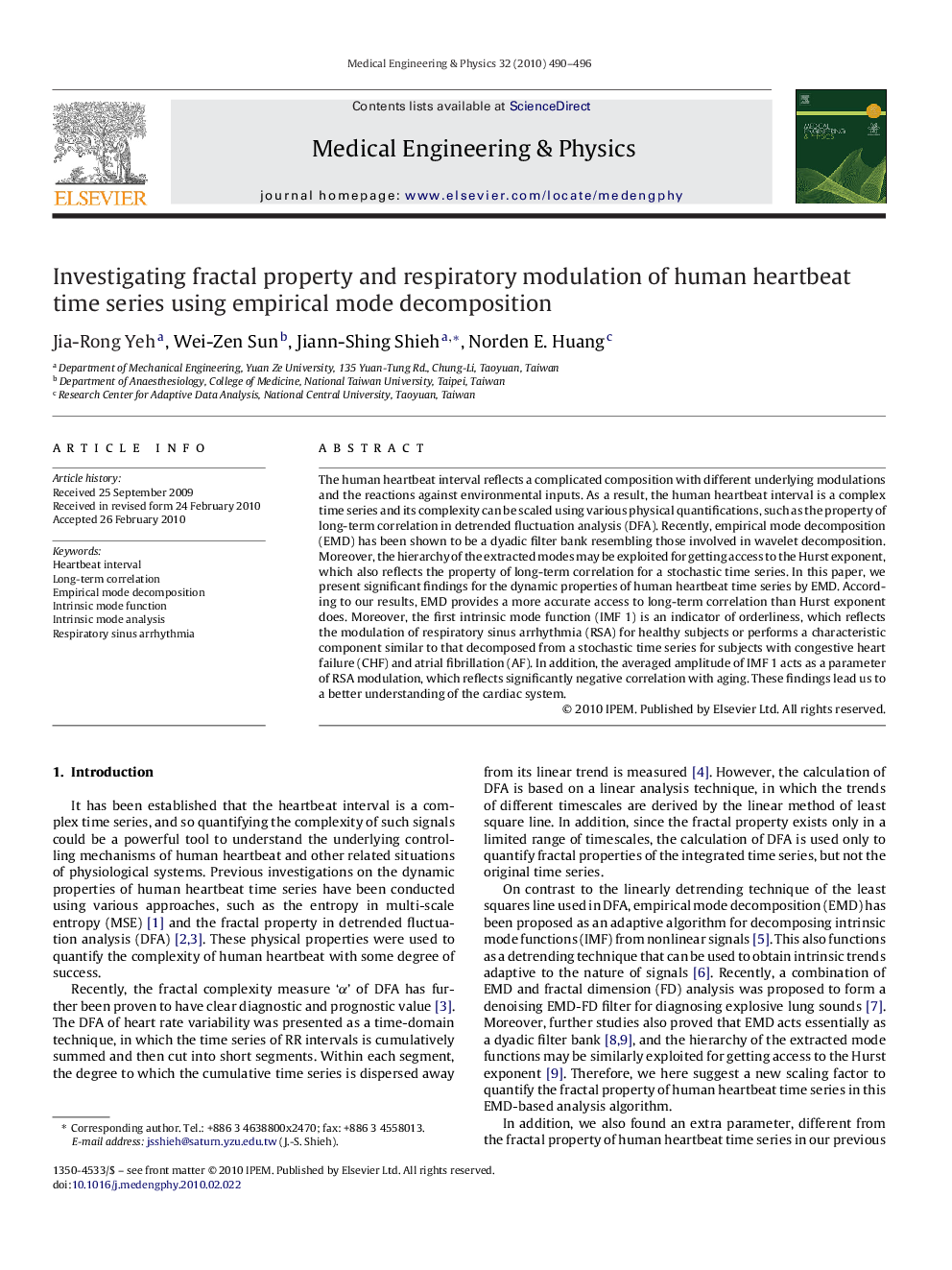| Article ID | Journal | Published Year | Pages | File Type |
|---|---|---|---|---|
| 876677 | Medical Engineering & Physics | 2010 | 7 Pages |
The human heartbeat interval reflects a complicated composition with different underlying modulations and the reactions against environmental inputs. As a result, the human heartbeat interval is a complex time series and its complexity can be scaled using various physical quantifications, such as the property of long-term correlation in detrended fluctuation analysis (DFA). Recently, empirical mode decomposition (EMD) has been shown to be a dyadic filter bank resembling those involved in wavelet decomposition. Moreover, the hierarchy of the extracted modes may be exploited for getting access to the Hurst exponent, which also reflects the property of long-term correlation for a stochastic time series. In this paper, we present significant findings for the dynamic properties of human heartbeat time series by EMD. According to our results, EMD provides a more accurate access to long-term correlation than Hurst exponent does. Moreover, the first intrinsic mode function (IMF 1) is an indicator of orderliness, which reflects the modulation of respiratory sinus arrhythmia (RSA) for healthy subjects or performs a characteristic component similar to that decomposed from a stochastic time series for subjects with congestive heart failure (CHF) and atrial fibrillation (AF). In addition, the averaged amplitude of IMF 1 acts as a parameter of RSA modulation, which reflects significantly negative correlation with aging. These findings lead us to a better understanding of the cardiac system.
